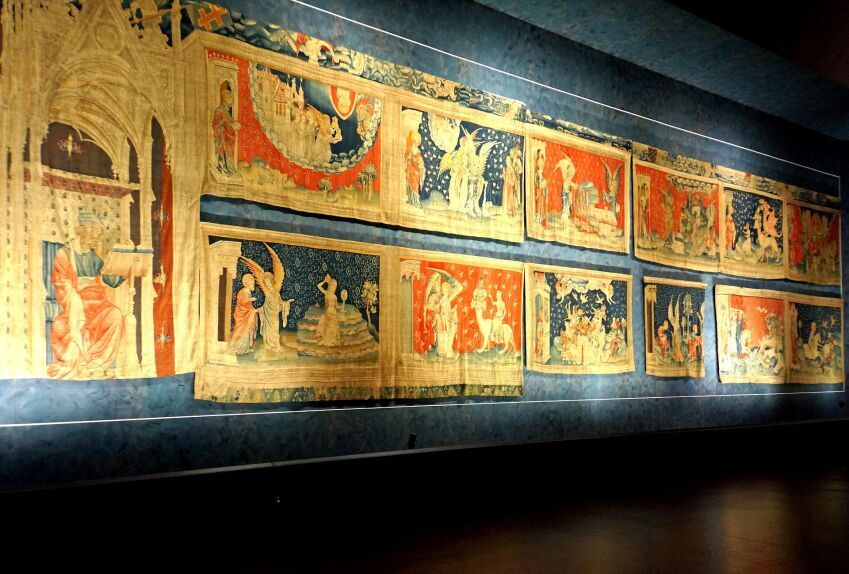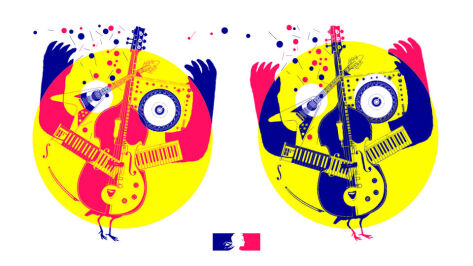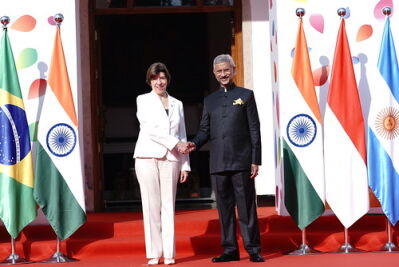 News
News 
UNESCO World Heritage: seven new French proposals to preserve the memory of the world
On 18 May, the executive counsel of the UNESCO approved seven proposals from France to register to the world heritage in the Memory of the World category. These proposals include French treasures, such as Montaigne’s Essays, the Apocalypse tapestry of Angers and “Shoah”, a film by Claude Lanzmann.
The Memory of the World programme created by the UNESCO in 1992 aims to facilitate the preservation of the world’s documentary heritage by preventing its definitive loss, and enable universal access “without hindrance” The idea is “to guard against the collective amnesia, calling upon the preservation of the valuable archive holdings and library collections all over the world”. Today, the UNESCO registers 494 documents and a documentary heritage from the five continents in diverse formats: print, graphic, audiovisual and digital. The Memory of the World programme raises awareness in the general public about critical issues of preserving a heritage that is “the footprint of our history and a component of our identities” For this new session, 64 applications were approved out of 99 from Member States.
Two national proposals
France, a country saluted by the UNESCO for its “active commitment of its institutions in the promotion of documents, particularly thanks to valuable national and international partnerships and cooperation agreements”, presented seven proposals, all approved.
They include two “national” proposals presented by French cities or regional authorities about a purely national heritage:
Montaigne’s Essays, Bordeaux copy, dated from 1588, submitted by the city of Bordeaux. According to the UNESCO website, this is a copy covered with notes from Montaigne and “the only surviving evidence of the original writing of this seminal text and the unique vantage point of Montaigne at work, a masterpiece of universal literary heritage”;
the Angers Apocalypse Tapestry, submitted by the city of Angers, which is the oldest and largest historiated tapestry in the world (with a surface area of 800 m2), illustrating the last book of the Bible, whose “message is intended to be universal”. According to UNESCO, “its innovative form, subject matter and uses make it an irreplaceable source of documentation”, and the French Ministry of Culture has stated that this listing “will strengthen its conservation and ensure universal access to this outstanding heritage”.
Five transnational proposals
As their name suggests, transnational nominations are heritage proposals from several countries, including France. The UNESCO approved:
“Shoah”, the 9:10 film by French director Claude Lanzmann, whose original negative and audio archives of witnesses to the history of the Shoah will be preserved, presented by France and the Jewish Museum in Berlin. This “monument-film”, which looks back at the extermination of six million Jews during the Second World War, was made over a period of 12 years. UNESCO points out that it is “the first collection of testimonies, filmed in the 1970s, after 30 years of almost silence on the part of many of the survivors”, and constitutes “a major educational work”;
the corpus of registers identifying people enslaved in the former French colonies, presented by the Departmental Archives of Martinique, Guadeloupe, Guyane and Réunion, the Foundation for the Memory of Slavery and the Archives of Haiti. Indeed, UNESCO reminded that slavery, “by denying civil status to people considered as property and tools of production, produced few documentary traces” on the identity and lives of these people;
the archives of the International Movement ATD-Quart Monde. These archives, which are kept in France and Burkina Faso, present the lives of destitute populations on five continents and the work of the ATD-Quart Monde action group “to act together against poverty”. The archives trace the evidence of this trials, but also “the spirit of resistance, hope and intelligence” that contribute “to the understanding of poverty as a violation of all human rights and to the fight to eliminate it”;
the illuminated manuscripts of Charlemagne’s court school. These manuscripts, held in the libraries of Trier, Bucharest, London, Vienna, Abbeville and the Bibliothèque nationale de France, were produced by the most famous artists around the year 800. They are “examples of Roman, Byzantine and Insular art” that “cast a bright light on the ideal of the political and cultural unity of the Carolingian empire”.
the archives of the International Solvay Conferences on Physics and Chemistry (1910-1962), presented by the International Solvay Institute with the support of the Free University of Brussels, the École supérieure de physique et de chimie industrielles and the PSL University. According to UNESCO, these archives represent “sensitive witnesses to the scientific internationalism that was taking shape at the beginning of the 20th century”. They come from the “Solvay Conferences”, which were “privileged meeting place for leading members of the scientific community”, where “the theory of relativity and the emergence of a new chemistry based on the exploration of the structure of the atom and chemical bonds” were born.
It is worth noting that these new documentary heritage items join the 14 French items already listed on the international Memory of the World register, including the 1789 Declaration of the Rights of Man and of the Citizen, Louis Pasteur’s archives, the Lumière brothers’ body of cinematographic works and General de Gaulle’s Appeal of 18 June 1940.






Comments
Vous devez être connecté pour laisser un commentaire. Log in